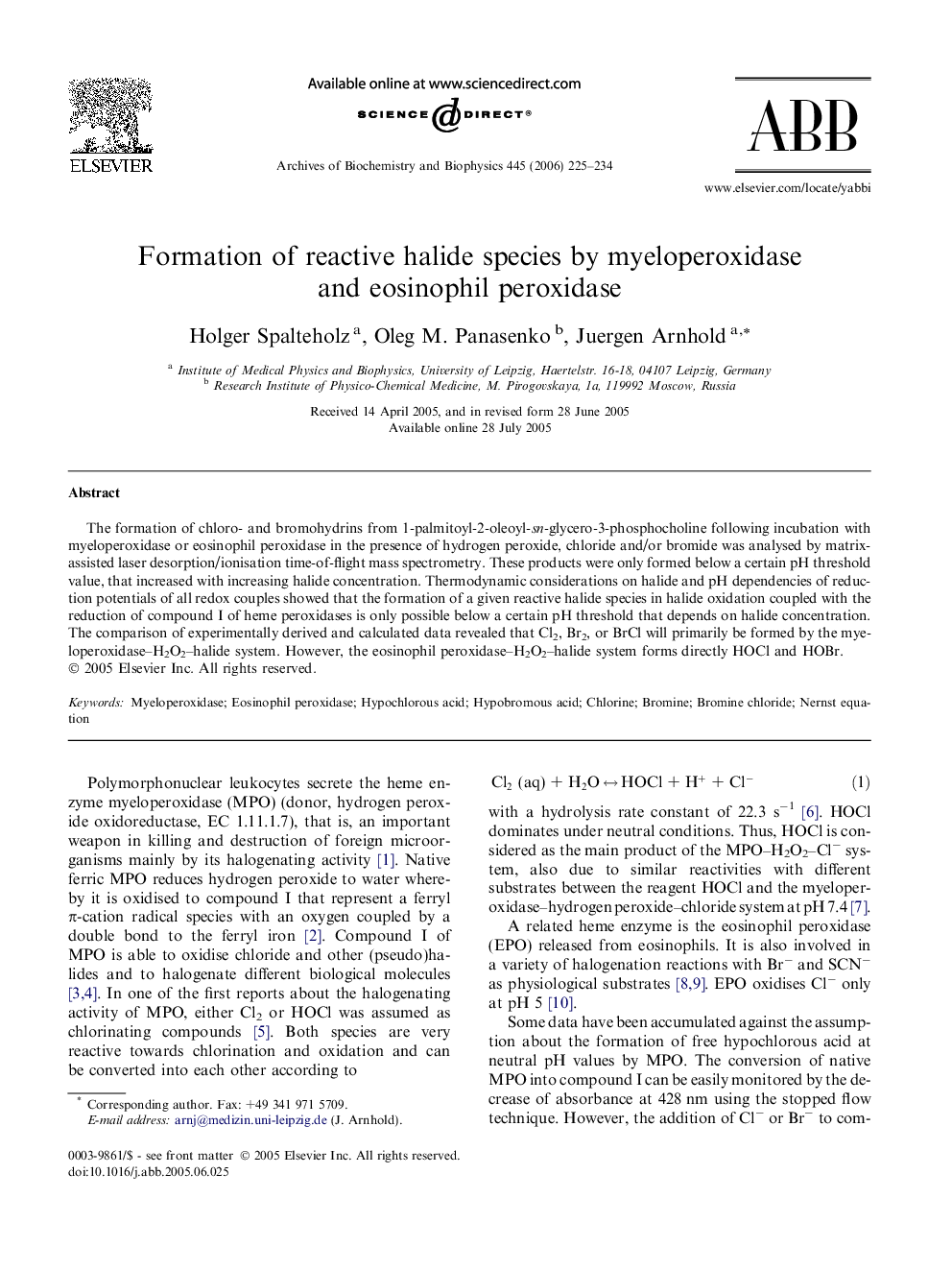| Article ID | Journal | Published Year | Pages | File Type |
|---|---|---|---|---|
| 1927600 | Archives of Biochemistry and Biophysics | 2006 | 10 Pages |
The formation of chloro- and bromohydrins from 1-palmitoyl-2-oleoyl-sn-glycero-3-phosphocholine following incubation with myeloperoxidase or eosinophil peroxidase in the presence of hydrogen peroxide, chloride and/or bromide was analysed by matrix-assisted laser desorption/ionisation time-of-flight mass spectrometry. These products were only formed below a certain pH threshold value, that increased with increasing halide concentration. Thermodynamic considerations on halide and pH dependencies of reduction potentials of all redox couples showed that the formation of a given reactive halide species in halide oxidation coupled with the reduction of compound I of heme peroxidases is only possible below a certain pH threshold that depends on halide concentration. The comparison of experimentally derived and calculated data revealed that Cl2, Br2, or BrCl will primarily be formed by the myeloperoxidase–H2O2–halide system. However, the eosinophil peroxidase–H2O2–halide system forms directly HOCl and HOBr.
